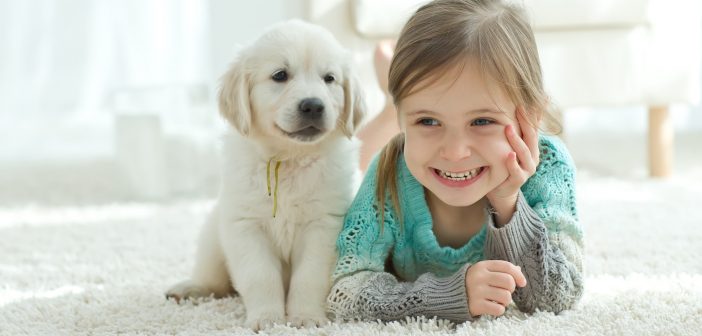Millions of American households include at least one pet – with 63 million owning dogs and 42 million enjoying the company of a cat.
When your hands are full with work and your children, it might not feel like you have the time to take on the responsibility of a pet. However, a pet can bring your family together and teach your children to be responsible.
Still on the fence about getting a family pet? Read on to discover the many benefits a dog, cat, or other animals can bring to your household.
How to Be Responsible with Your Pet Choice
Getting the right type of pet for your family will help you bond with the animal and turn pet ownership into a success.
If your lifestyle is busy, time-consuming pets like a dog won’t suit you or your children very well. For a first pet, rodents such as pet rats or hamsters work well, or fish are great, too. They’re low-maintenance but still require responsibility from your children to look after them well.
Cats make great pets for older children or families living in an apartment. The breed can affect their happiness, too: some, such as Persian cats, were bred to be indoor companions. They’ll take to apartment living well.
Most families want a dog – and it’s easy to see why! However, make sure you have the time to walk them every day, play with them, and have a yard to let them run around in.
The size of the pet also reflects the costs: small animals like guinea pigs and fish won’t have such high expenses. A large dog, however, needs a big budget to match. As well as vet bills, pet furniture, and grooming tools, you’ll need to budget for their food and treats – which quickly adds up over the month.
10 Ways a Pet Helps Children Grow and Learn
Choosing a pet is about more than finding one that suits your lifestyle and home. They’ll teach your children all about responsibility and accountability. Not convinced your child will benefit from a pet? Check out these ways an animal will help them to grow and learn.
1. Learn About Food and Diet
It’s easy to over-feed pets when they look at you with their cute eyes begging for a treat. Learning about what you should – and shouldn’t – feed your pet is an essential part of raising a happy and healthy animal.
Your child will learn about the best types of nutrition for their pet – and you can use this as a way to talk to them about their own diet.
2. Discover the Importance of Social Interaction
Pets need attention! Some, like dogs, need a lot more than others. Even animals with minimal need for social interaction, like pet lizards, still benefit from time with their humans.
Your child will learn more about appropriate behaviors to show around animals – such as keeping a calm voice – and apply this outside of the home, too.
3. Find Out How Grooming Helps Bonding Between Humans and Animals
Fluffy animals need grooming and caged animals need cleaning out. It’s a regular task that your child needs to take care of – and is a good learning opportunity, too.
This attention to hygiene is a great way to open up discussions about personal cleanliness as well as building the bond between your child and your pet.
4. Become Aware of Household Cleanliness
From cat toys scattered in the hallway to cleaning up puppy toilet training accidents, a pet means you need to spend more time on cleaning your house than before.
Use this as a way to teach your child about cleaning up after themselves – and tidying up even when the mess isn’t one they’ve created, too.
5. Encourage Regular Exercise
Even cage-based animals like hamsters can teach your child about the importance of regular exercise. They have their cage wheel and perhaps a tunnel run – you might even have a roaming hamster ball to let them roll around the house.
Other pets, such as dogs, encourage physical activity in your child, too. They’ll need to get involved in daily walks and active playtime to keep the dog healthy.
No matter the size of your pet, it’s a great way to introduce discussions with your child about the importance of regular exercise for both physical and mental health.
6. Discover a Commitment to Education Outside of School
Most pets need some type of training to make sure they behave and fit well into the family home. Taking your child to dog training classes, for example, will help them to learn more about commitments, education, and consistency.
Make sure you help your child to understand the importance of being consistent with their pet training. You can make it interesting to encourage self-learning, too: for example, older children may want to teach their dog tricks as well as obedience.
7. Learn About 24/7 Care
A pet is a part of the family – and that means they need to be included and cared for at all times. Children may not realize how external commitments can impact their own lives.
Having a pet will teach them about the importance of being responsible for another creature at all times – even when the cat meows to be let out early in the morning!
8. Build Planning Skills
Caring 24/7 for an animal includes some advanced planning skills. You can’t suddenly take off on vacation, for example, or leave the pet alone for extended periods.
Teach your child about planning their schedule around their pet. They’ll need to arrange feeding times, exercise, grooming and play for any time they aren’t able to take care of the animal themselves.
9. Teach Them About Medical Responsibilities
All pets come with vet bills at some point. A child can learn about budgeting for expected medical bills and how to seek health advice for their pet.
They’ll also learn about the importance of bonding with their pet and knowing what is normal, and abnormal, behavior. Teach them to regularly check their pet and pay attention to potential issues before they become a big health problem.
10. Build Empathy for Others
The biggest benefit of having a pet is empathy. Caring for another animal makes us stop and think about more than ourselves in any given situation.
It also builds our empathy in smaller ways: if we think our pet is cold, we’ll find a way to keep them warm. Encouraging this nurturing and sharing behavior will benefit your child as they grow up.
Aid Your Child’s Development Further with More Parenting Tips
Teaching your child to be responsible for the care of a pet is one way to help them grow and develop into well-rounded and caring adults.
However, there are many more things you can do to aid the development of your child in an inclusive and encouraging way. Check out our parenting blogs for tons of tips to bring you closer together with your children to aid their personal growth as they get older.





There are Nursing Papers for Sale that are harder to complete than others. Thesis, dissertations, and research papers are some of them. Even if you are enthusiastic and capable student, you might need Thesis Proofreading Services in coping with your difficulties.
You should take some time and evaluate the Literature Review Writing Service and the benefits that accrue to the clients. Most students buy Cheap Custom Term Papers and get ripped off.
I have taken my dog with me when I ride a bike when he was younger. I now take him for a walk. It is so important. it can be dangerous. Hetoq